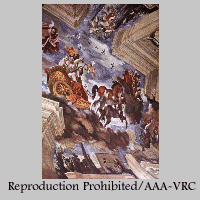
1. Rome, Casino Ludovisi, Aurora, 1621 (Ceiling mural by Guercino, 1591-1666). Aurora was the Roman personification of dawn; symbolizes rise, dawn, beginning.

1. Rome, Casino Ludovisi, Aurora, 1621 (Ceiling mural by Guercino, 1591-1666). Aurora was the Roman personification of dawn; symbolizes rise, dawn, beginning.
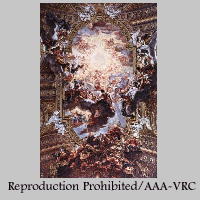
2. Rome, The Church of the Gesu, mother church of the Jesuit Order. Ceiling mural known as "The Triumph of the name of Jesus" 1674-1679, by Giovanni Battista Gaulli, 1639-1709. The church building itself was designed by Vignola and was begun in 1568.

3. Rome. The Church of Santa Maria in Compitelli, 1663-1667. Architect, Carlo Rainaldi. Theatrical lighting is characteristic of the Baroque Period.
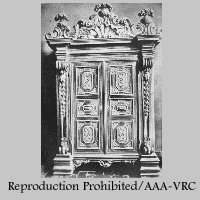
4. Carved wood armoire. Parma. Second half of the 17th Century. Note the restless character of the pediment.
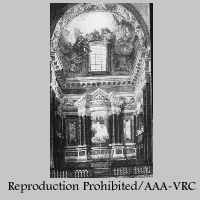
5. Rome. The Cornaro Chapel of the Church of Santa Maria della Vittoria 1645-1652 as shown in an 18th-Century painting.
The Chapel was designed by Gianlorenzo Bernini for the Cornaro family in which he depicted a mystical vision experienced by the great counter reformation Saint Theresa of Avila.
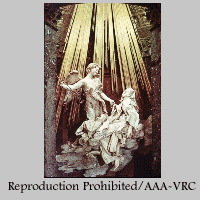
6. Rome. Peinture vivante altarpiece by Gianlorenzo Bernini "The Ecstacy of Saint Teresa" 1645-1652. Cornaro Chapel, Santa Maria della Vittoria. Note that Bernini's famous sculpture is lighted from a concealed light source and the light is filtered through yellow glass.
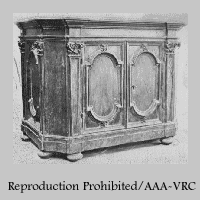
7. Credenza. Florentine, about the middle of the 17th Century. Note the bold bolection moldings and bun feet.
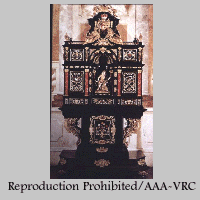
8. Ebony cabinet with pietra-dura inlay and gilt bronze mounts. It was designed by Foggini, head of the Uffizi workshops. He was personally responsible for the sculptures including that of the Elector Palatine for whom it was built in the grand Ducal workshops at Florence between 1707 and 1709. It illustrates the exceptional richness that could be achieved in furniture production.
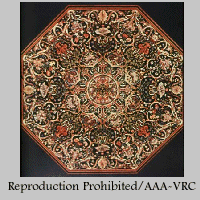
9. Pietre dura table top designed by Jacopo Ligozzi and Bernardino Poccetti, made in Florence 1633-1649 for Ferdinando II de'Medeci. It is composed of semi-prescious hard stones, agates, jasper, lapis lazuli, and chalcedony inlaid into black Flanders marble.
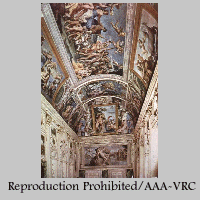
10. Ceiling and wall paintings by Annibale Carpacci (1560-1609) in the Gallery of the Farnese Palace, Rome (1597-1604).
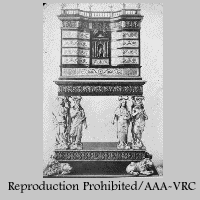
11. Cabinet with inlay decorations. Venetian, about the middle of the 17th Century. Note caryatid and atlas figures.
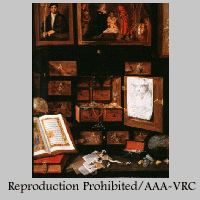
12. Detail of "A Collector's Cabinet," oil painting by Frans Francken the Younger, 1617.